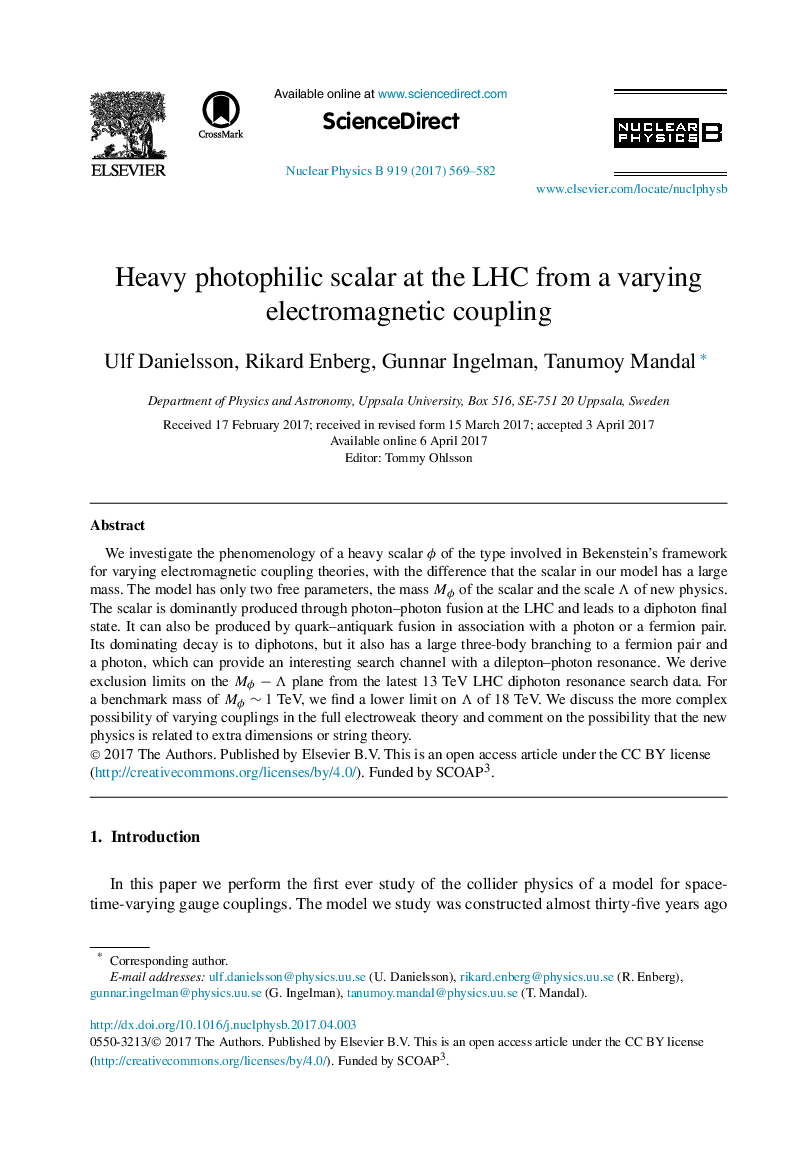| Article ID | Journal | Published Year | Pages | File Type |
|---|---|---|---|---|
| 5494384 | Nuclear Physics B | 2017 | 14 Pages |
Abstract
We investigate the phenomenology of a heavy scalar Ï of the type involved in Bekenstein's framework for varying electromagnetic coupling theories, with the difference that the scalar in our model has a large mass. The model has only two free parameters, the mass MÏ of the scalar and the scale Î of new physics. The scalar is dominantly produced through photon-photon fusion at the LHC and leads to a diphoton final state. It can also be produced by quark-antiquark fusion in association with a photon or a fermion pair. Its dominating decay is to diphotons, but it also has a large three-body branching to a fermion pair and a photon, which can provide an interesting search channel with a dilepton-photon resonance. We derive exclusion limits on the MÏâÎ plane from the latest 13 TeV LHC diphoton resonance search data. For a benchmark mass of MÏâ¼1 TeV, we find a lower limit on Î of 18 TeV. We discuss the more complex possibility of varying couplings in the full electroweak theory and comment on the possibility that the new physics is related to extra dimensions or string theory.
Related Topics
Physical Sciences and Engineering
Mathematics
Mathematical Physics
Authors
Ulf Danielsson, Rikard Enberg, Gunnar Ingelman, Tanumoy Mandal,
